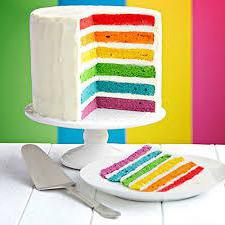Confectionery mastic is loved by all culinary specialists for its plasticity and beauty. Mastic allows you to create real works of art from simply delicious cakes. From it you can sculpt, like plasticine or clay, figures of people and animals, castles and palaces, flowers and butterflies.
Only unlike plasticine, mastic is edible - it is made on the basis of powdered sugar and condensed milk. To decorate confectionery masterpieces , mastic of different colors and shades is needed. How to paint mastic at home?
Home coloring
To create confectionery products, you can buy ready-made multi-colored mastic in the store. But you can try to do everything yourself, using various methods and substances. There are two main options, how to paint the mastic and get the perfect material for creativity:
- with the help of natural juices, decoctions;
- using industrial dyes.
To create color, you can use the products that are in every home. It can be vegetables (beets, carrots), fruits and berries (orange, strawberries, raspberries, cherries, currants), strong tea or coffee, spices (saffron, curry, turmeric).
Industrial dyes are also widely represented on the market. Among them are natural and synthetic substances.
When choosing a dye, you need to remember that natural juices give a less saturated color and can give a mastic flavor to a certain product. Dyes purchased at the store are used in smaller quantities and give a bright saturated shade.
Using natural paints
As you know, a variety of shades is obtained by mixing three source colors: red, yellow and blue. How to color mastic using conventional products? To get a red color, you can cook beetroot or berry juice from raspberries, cherries, pomegranates, strawberries. In this case, fruits or vegetables are cut, boiled in acidified water and squeezed juice. The resulting liquid can be used in the preparation of mastic, then the color will be more saturated. Spices or lemon peel will give yellow. To do this, saffron, curry or turmeric must be diluted in a small amount of vodka or alcohol. A decoction of leafy greens, such as spinach, will give a beautiful green color. You can also mix yellow and blue colors. A blue color is obtained by mixing starch with indigo root. If you take coffee or chocolate, you can get a nice brown tint. All other color solutions can be achieved by mixing the primary colors.

It is possible to buy food colors based on natural substances in the store, but they are usually quite expensive.
Liquid industrial dyes
Liquid dyes belong to the group of synthetic and are water-based. They can be used both for coloring the finished mastic, and for an aqueous solution for its preparation. The color of the mastic in this case may not be very bright.
Gel Synthetic Dyes
Substances of this group have a thicker consistency. How to dye mastic in this case? The gels are easy to use and well suited for beginner confectioners.
A small amount of paint (literally a little) must be diluted in a small amount of water or vodka, mixed with a piece of mastic, then mixed into the bulk until color uniformity is obtained. Gel dyes are convenient for decorating small details of a confectionery masterpiece or creating festive inscriptions. For these purposes, you can buy special markers with an edible composition.
Dry food paints
How to paint a mastic when there are ready-made figures and decoration elements? Dry synthetic paints are suitable, which can simply be applied to the surface with a soft brush and get an intense bright color. There are powders with the effect of glossy shine, golden shimmer or mother of pearl. Such coloring is often used to create wedding cakes. How to paint mastic dry dyes completely?
Like other types of food paints, the powder must be thoroughly mixed until a homogeneous mass is obtained. And you can use a wooden stick (for example, a toothpick). It must be several times placed first in a coloring powder, and then in mastic. Then knead the sweet mass. The process can take a lot of time depending on the desired result.
How to color mastic correctly?
There are general rules when working with sweet mastic when painting. How to color mastic to get a real work of confectionery art? In the process of selecting shades, it is useful to use a color table, it will help not to make mistakes in the original colors. Also, to determine the ideal proportions of the components, it is better to try a new color on a small piece. When dye is introduced into the sweet mass, it is necessary to knead it carefully to get an even beautiful color. But if you want to get mastic with interesting streaks, a slightly different technology is used. After each introduction of the dye, the edges of the plastic mass are wrapped and continue to knead. During operation, the mastic should remain soft. With the laborious process of creating individual figures, it is better to take small portions, wrapping the bulk in a cling film. It is also important to remember about color saturation, depending on which project the confectioner decided to implement. Although homemade natural dyes will give calmer shades, this is not a disadvantage. Pleasant pastel colors and complete safety of use are perfect for children's cakes. Synthetic dyes are also not hazardous to health and will make it possible to realize the wildest dreams.
Confectioner's craftsmanship is akin to the artist's art or sculpture. Of course, the newcomer has a lot to learn: how to make sponge cake or cake shortcakes, how to make a delicious cream, how to color the mastic, how to create a multi-tiered masterpiece and many other secrets. But as a result of these efforts, a person masters a beautiful, festive and delicious art.